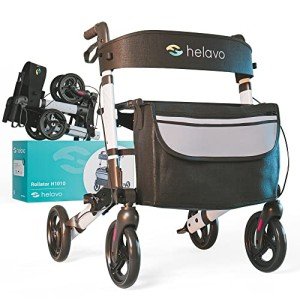The Comprehensive Guide to Adjustable Walkers: Enhance Mobility and Independence
Adjustable walkers have significantly become an integral part of mobility help, supplying support and self-confidence to people facing obstacles in movement. They cater to a large range of users, from seniors recuperating from injury to individuals with mobility problems. In this article, we will delve into the features, benefits, factors to consider, and upkeep of adjustable walkers, boosting understanding and helping with informed choices.
What Is an Adjustable Walker?
An adjustable walker is a mobility aid designed to supply support and assistance to people who are recovering from surgery, experiencing persistent conditions, or experiencing troubles with balance and stability. Unlike basic walkers, adjustable walkers use adjustable height settings, making sure a much better fit for users of various heights and preferences. This versatility makes them perfect for a diverse series of individuals.
Table 1: Key Features of Adjustable Walkers
| Function | Description |
|---|---|
| Height Adjustment | Walkers can be changed to various heights for optimum comfort and support. |
| Foldability | Many adjustable walkers can be easily folded for convenient storage and transport. |
| Lightweight Materials | The majority of models are made from lightweight yet durable products for convenience. |
| Ergonomically Designed Grips | Handles are contoured for a comfortable grip, lessening pressure on hands. |
| Durable Wheel Options | Some designs use wheels for improved mobility over various surface areas. |
| Devices Availability | Optional devices like baskets and trays that add performance. |
Advantages of Using an Adjustable Walker
- Customized Fit: The main advantage of an adjustable walker is the ability to tailor it to the user's height, promoting much better posture and reducing stress on the back and joints.
- Improved Stability: They offer considerable support, allowing users to preserve balance while walking, hence minimizing the risk of falls.
- Mobility Independence: With adjustable walkers, people typically feel a sense of freedom and self-confidence, empowering them to walk around separately.
- Flexible Usage: These devices are developed for both indoor and outdoor use, enabling users to browse various surfaces securely.
- Increased Safety: Many adjustable walkers come geared up with features like brakes or non-slip grips, improving total safety throughout use.
Selecting the Right Adjustable Walker
Selecting the ideal adjustable walker involves considering multiple elements, which can substantially impact the user's convenience and safety. The following is a breakdown of considerations to keep in mind:
- Height Compatibility: Ensure that the walker can be gotten used to fit the user's height conveniently. A walker that is too low or expensive can develop stress and reduce stability.
- Weight Capacity: Check the weight capability of the walker to ensure it can support the user safely.
- Wheel Options: Depending on the planned use, consider whether a walker with wheels is necessary for ease of mobility. Wheeled walkers can often maneuver through tight spaces with less effort.
- Product Quality: Opt for walkers made from high-quality products to guarantee durability and toughness.
- Additional Features: Look for additional features such as a seat, storage baskets, or cup holders for added convenience.
- Convenience: Ensure that the grips and deals with are comfortable and decrease pressure throughout use.
- Test Before Purchase: If possible, have the user experiment with various models to find the one that feels most comfortable and secure.
Upkeep and Care
Correct maintenance and care of an adjustable walker can boost its life expectancy and ensure safe usage. Here are some upkeep tips:
- Regular Inspection: Check the walker consistently for any indications of wear and tear, consisting of frayed straps, loose screws, or worn grips.
- Keep It Clean: Regularly clean down surface areas to prevent dirt buildup, particularly if exposed to outdoor elements.
- Lube Moving Parts: If the walker has wheels or hinges, they ought to be periodically lubricated to guarantee smooth operation.
- Height Adjustment Checks: Regularly confirm that height adjustments stay secure and intact to maintain stability.
- Seek Repairs Promptly: If any parts end up being damaged, seek repair work right away to avoid compromising security.
Regularly Asked Questions (FAQ)
1. How do I understand if an adjustable walker is ideal for me?
Consulting with a healthcare professional or physical therapist can assist figure out whether an adjustable walker suits your private needs.
2. Can a walker be adjusted for more than one person?
Yes, adjustable walkers can easily be set to different heights for different users, making them suitable for home use.
3. Are adjustable walkers safe for outdoor use?
Absolutely! Numerous adjustable walkers are created with sturdy products and particular features, offering stability on diverse surface areas, including lawn and gravel.
4. What is the distinction between a walker and a rollator?
A walker is typically a stationary support device, while a rollator normally has wheels to help with movement and might likewise consist of an integrated seat.
5. Just how much does an adjustable walker expense?
Prices can range commonly based upon features and materials, normally from ₤ 50 to over ₤ 300. It's best to search and assess alternatives.
Adjustable walkers offer a mix of security, benefit, and support for people needing assistance with mobility. Understanding how to choose, preserve, and make the most of the utility of an adjustable walker is important for improving quality of life. As All-Terrain Walker continue to enhance, adjustable walkers stay a vital tool for promoting self-reliance and self-confidence in individuals dealing with mobility obstacles. With the right option, users can experience increased freedom, assurance, and convenience in their daily movements.

